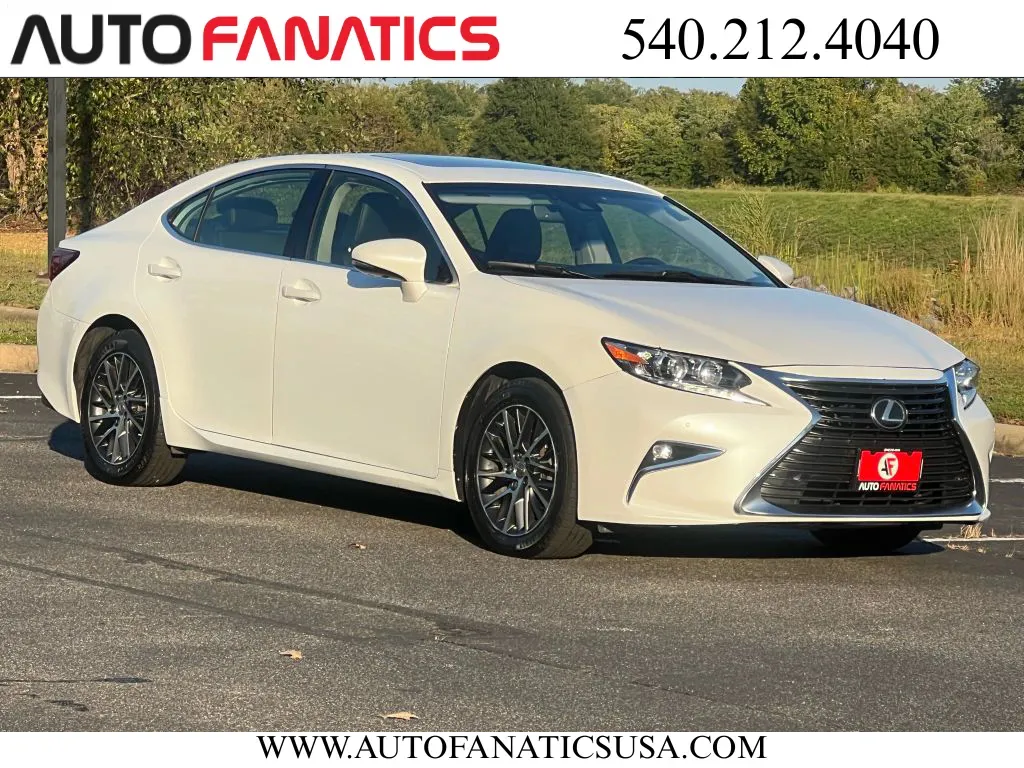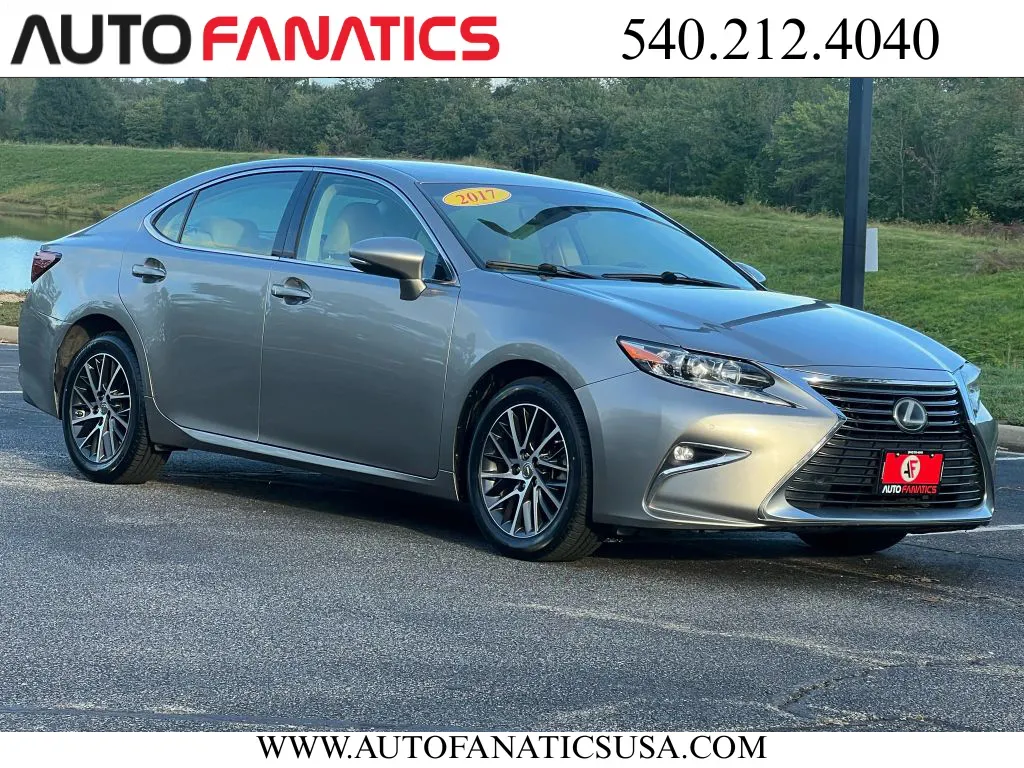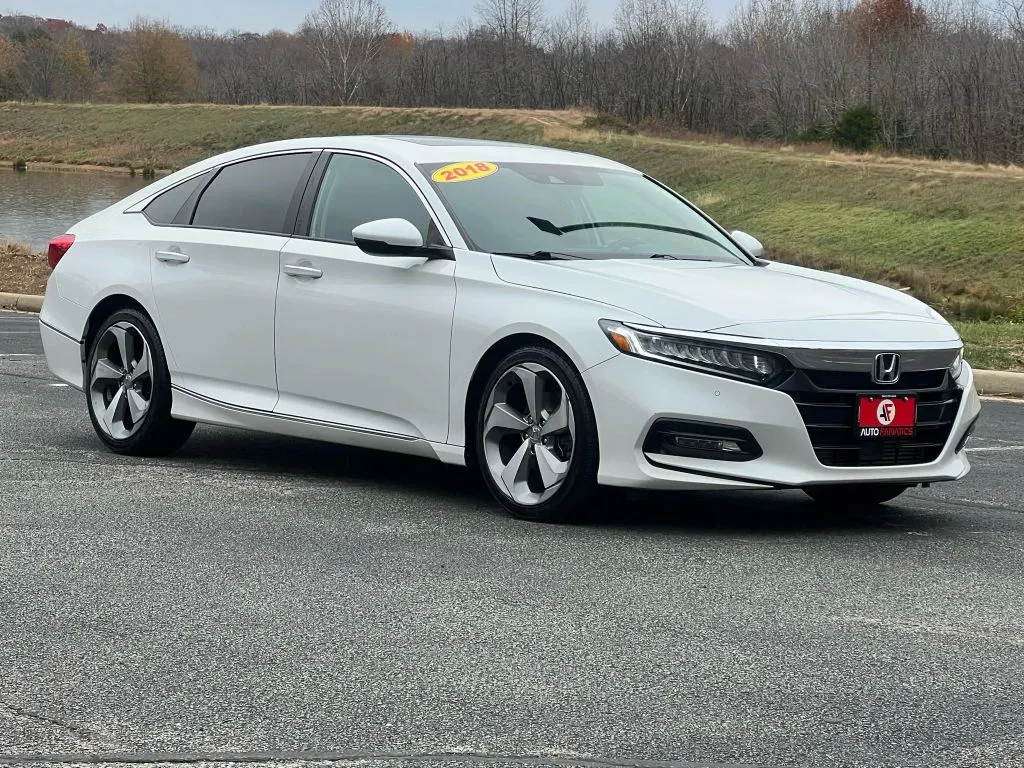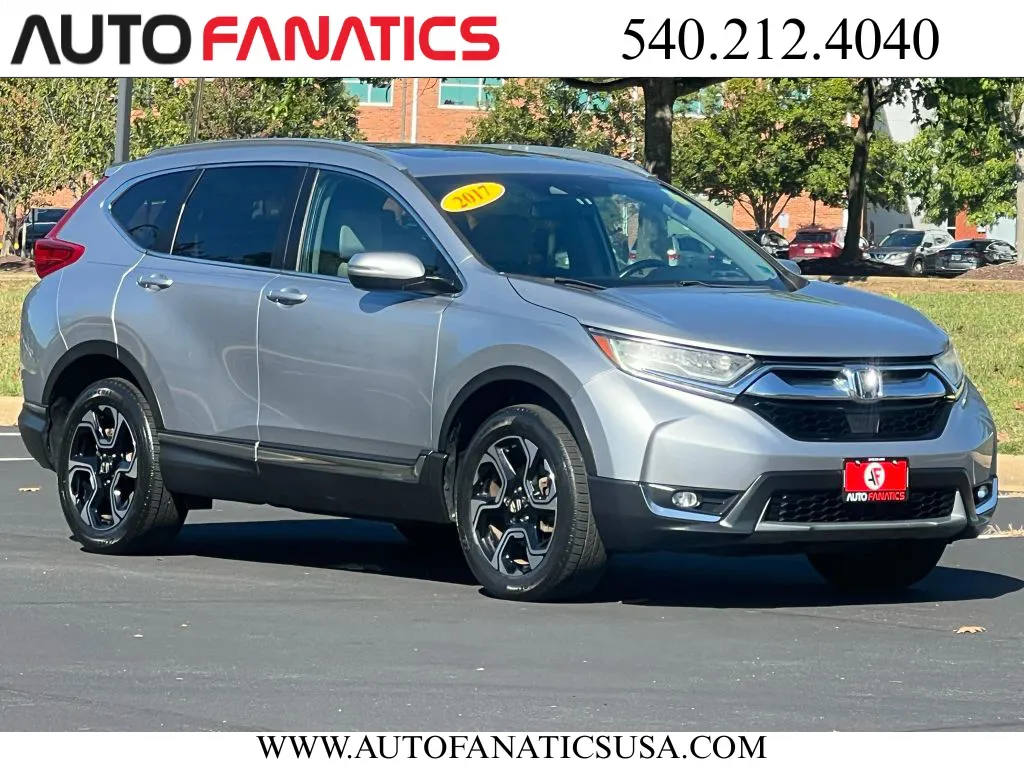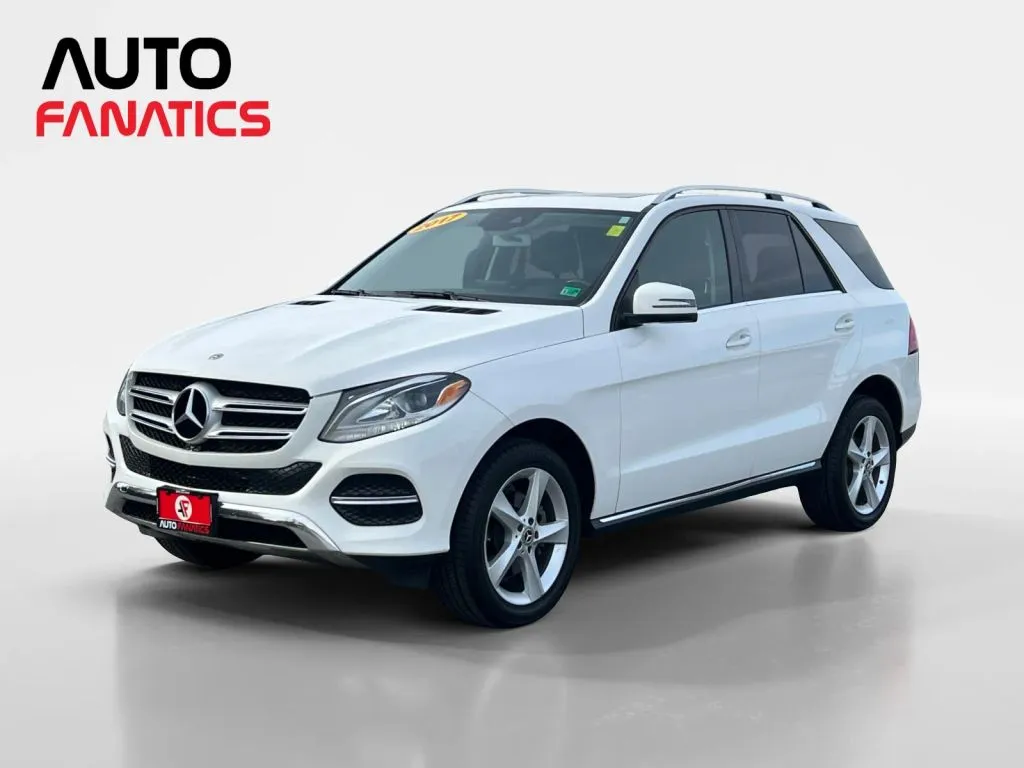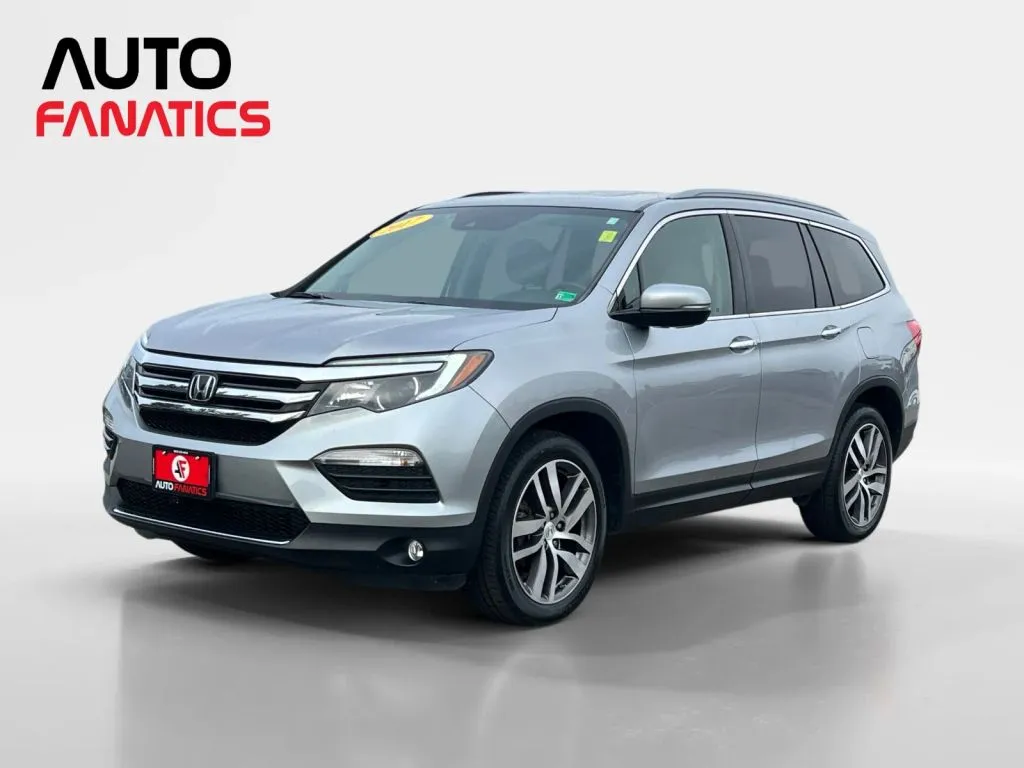Estimate Your Car Payment: A Simple Guide
Table of Contents
Estimate Your Car Payment: A Simple Guide
An auto loan might seem complicated, but it really boils down to four key elements: the vehicle’s price, your down payment, the interest rate, and the loan term. That’s it. When you understand how these four pieces work together, you take the mystery out of financing. Each one is a lever you can adjust to find a payment that fits your budget. A bigger down payment lowers the amount you borrow. A better interest rate saves you money every month. Learning how these factors interact is the secret to being able to estimate a car payment with precision. We’ll break down each component so you can see exactly where your money is going and build a loan with confidence.
Key Takeaways
- Do your financial homework first: Before you start looking at cars, figure out your budget, review your credit, and get pre-approved for a loan. This preparation puts you in control of the process and lets you shop with confidence.
- Shrink your loan to lower your payment: The most direct way to get a smaller monthly bill is to borrow less money. A larger down payment and a higher trade-in value both reduce your loan principal and save you money on interest over time.
- Focus on the total cost, not just the monthly bill: A low monthly payment can be misleading if it’s tied to a very long loan term. Always consider the total amount you'll pay, including all interest, to ensure you’re getting a genuinely smart deal.
What Goes Into Your Car Payment?
Figuring out your potential car payment can feel like solving a puzzle, but it’s much simpler once you see how the pieces fit together. Your monthly payment isn’t just an arbitrary number; it’s calculated based on a few key financial details that you have more control over than you might think. Understanding these components puts you in the driver’s seat, allowing you to see where you can make adjustments to find a payment that fits comfortably within your budget.
Think of it this way: the price of the car is your starting point, but factors like your down payment, the value of your trade-in, your credit score, and the length of your loan all play a major role in shaping your final monthly cost. Each of these elements is a lever you can pull. A bigger down payment lowers the amount you borrow. A higher trade-in value does the same. A better credit score gets you a lower interest rate, saving you money every month. By getting familiar with these elements, you can approach financing with confidence and make choices that work for you, not the other way around. Let’s break down exactly what goes into that final number so you can build a loan that makes sense for your life.
The Key Factors That Set Your Monthly Rate
When you start looking at auto loans, you’ll find that three main things determine your monthly payment: the vehicle’s price, the interest rate, and the loan term. The price of the car is the total amount you’re borrowing. The interest rate is what the lender charges you for borrowing the money, expressed as a percentage. Finally, the loan term is how long you have to pay it back, usually in months. A car loan calculator uses these three inputs to estimate your payment. A lower vehicle price, a lower interest rate, or a longer loan term can each result in a smaller monthly payment, but it's important to see how they work together to affect the total cost.
How Your Credit Score Plays a Role
Your credit score is one of the most influential factors when it comes to securing a car loan because it directly impacts your interest rate. Lenders use your score to gauge your reliability as a borrower. A higher credit score signals lower risk, which usually means you'll be offered a lower interest rate. As noted by experts, a good credit score can save you a significant amount of money over the life of your loan. Before you start shopping, it’s a great idea to know where your credit stands. You can even get pre-qualified to see what rates you might be eligible for, giving you negotiating power and realistic expectations.
The Advantage of a Vehicle Trade-In
If you have a car you’re ready to part with, trading it in can be a fantastic way to lower your next car payment. The value of your current vehicle is applied directly to the price of your new one, reducing the total amount you need to finance. For example, if you want to buy a $20,000 SUV and your trade-in is worth $5,000, you only need to borrow $15,000. This simple step means a smaller loan and, consequently, a more manageable monthly payment. You can easily get your trade-in value online to see how much your current car could save you on your next purchase.
Why a Down Payment Matters
Making a down payment is another powerful tool for managing your auto loan. A down payment is the cash you pay upfront toward the car’s price, and it works just like a trade-in to reduce the amount you need to borrow. The more you can put down, the less you’ll have to finance, which leads to lower monthly payments. According to Progressive, the more money you pay upfront, the less you need to borrow. Even a modest down payment can make a noticeable difference in your loan terms and can help you build equity in your vehicle faster.
The Car Payment Formula, Explained
Figuring out a car payment can feel like trying to solve a complex math problem, but it’s more straightforward than you think. When you break it down into its core parts, you can see exactly where your money is going and take control of the process. Understanding these elements is the key to finding a loan that fits your budget comfortably, without any surprises. Let's walk through the four main pieces of the car payment puzzle so you can approach financing with confidence.
The Starting Point: Purchase Price and Sales Tax
Everything begins with the price of the car. This is the foundation of your auto loan. To find the true starting point, add any applicable Virginia sales tax to the vehicle's sticker price. This combined amount is your initial total. From there, subtract your down payment and trade-in value. The number you’re left with is the principal—the actual amount you’re borrowing. Getting this number right is the essential first step to an accurate payment estimate.
Understanding Your Interest Rate
Your interest rate, or Annual Percentage Rate (APR), is what it costs to borrow money. Even a small difference in your rate can have a huge impact on your monthly payment and the total amount you pay over time. Your credit score is the biggest factor in determining your rate, but you can always get pre-qualified to see where you stand before you start shopping. A lower APR can save you thousands.
Choosing the Right Loan Term
The loan term is how long you have to pay back the loan, usually expressed in months like 48, 60, or 72. It’s tempting to choose a longer term for a lower monthly payment. However, a longer term means you'll pay significantly more in total interest. A shorter term has higher monthly payments, but you’ll pay less interest overall and own your car sooner. A car loan calculator can help you find the right balance for your budget.
Accounting for Additional Fees
The sticker price isn’t the only cost. You also need to account for additional fees, which can include dealership documentation fees, state title and registration costs, and any optional products you add. For instance, you might include an extended protection plan for extra peace of mind. A trustworthy dealership will be transparent about these costs, so you have a complete picture of your financial commitment. Always ask for a full breakdown.
Common Car Payment Mistakes (and How to Avoid Them)
It’s easy to get caught up in the excitement of finding the perfect car and focus only on the monthly payment. But making a smart financial decision means looking at the whole picture. A few common missteps can end up costing you hundreds or even thousands of dollars over the life of your loan. The good news is that they’re all avoidable. By understanding these potential pitfalls, you can approach your car purchase with confidence and secure a deal that truly works for your budget.
Looking Beyond the Monthly Payment
A low monthly payment can be very tempting, but it doesn't always mean you're getting the best deal. Sometimes, a lower payment is achieved by stretching the loan out over a longer period. While this makes the monthly bill more manageable, it often means you'll pay significantly more in total interest. Instead of asking, "What will my monthly payment be?" start by focusing on the total price of the vehicle and the overall cost of the loan. Using a car loan calculator can help you see how different loan terms affect the total amount you pay, giving you a clearer financial picture before you commit.
Calculating the Total Cost of Ownership
The sticker price is just the beginning. To understand the true cost of your auto loan, you need to add up the loan principal (the amount you borrow), the total interest you'll pay over the term, and any additional fees. This is the total cost of ownership, and it’s the most important number to consider. At Auto Fanatics, we believe in complete transparency. We’ll walk you through every line item so you know exactly where your money is going. Our straightforward approach ensures there are no surprises, just a clear and honest path to owning your next vehicle.
Factoring in Insurance and Maintenance
Your financial planning shouldn't stop at the loan payment. Remember to budget for the other essential costs of car ownership: insurance, gas, and routine maintenance. Your insurance premium can vary based on the car you choose, and regular upkeep like oil changes and tire rotations is necessary to keep your vehicle running smoothly. Thinking about these expenses ahead of time prevents financial strain down the road. To help you manage unexpected repair costs, we also offer various protection plans that can provide peace of mind and make budgeting for maintenance much more predictable.
The Pitfalls of Long Loan Terms
Lenders may suggest loan terms of 72, 84, or even 96 months to make a vehicle seem more affordable with a lower monthly payment. Be cautious with these offers. While your payment will be smaller, a longer loan term means you'll be paying interest for many more years. This not only increases the total cost but also puts you at risk of owing more than the car is worth for a longer period—a situation known as being "upside down." By choosing to get pre-approved for a loan, you can set a firm budget based on a shorter, more favorable term before you even start shopping.
Why You Should Always Compare Rates
Don't accept the first loan offer you receive. Interest rates can vary significantly between lenders, and shopping around is one of the easiest ways to save money. A lower interest rate directly translates to a lower monthly payment and less total interest paid. Your credit score is a major factor here, as a higher score typically qualifies you for better rates. We make it easy to see where you stand by helping you get pre-qualified with a trusted lender like Capital One right from our website. This lets you compare offers and choose the one that saves you the most.
How to Use an Auto Loan Calculator
An auto loan calculator is one of the most powerful tools you can use when planning for a new vehicle. It takes the mystery out of financing by giving you a clear estimate of your monthly payments and the total cost of your loan. Instead of guessing what you can afford, you can sit down with a calculator and map out a budget that truly works for you. This simple step helps you shop with confidence, knowing exactly which vehicles fit comfortably within your financial plan. It’s all about making an informed decision before you even step onto the lot.
What Information You'll Need
To get the most accurate estimate from a calculator, you’ll want to have a few key pieces of information ready. First is the vehicle price, which is your starting point. Next, gather the amount of your down payment and the estimated value of your current vehicle if you plan to get a trade-in value. You’ll also need an idea of your potential interest rate, which is largely based on your credit score, and the loan term, which is the number of months you plan to take to pay off the loan. Having these numbers handy will give you a realistic snapshot of your potential costs.
Finding a Reliable Calculator
You can find auto loan calculators on most bank and dealership websites. A reliable calculator is one that’s straightforward and breaks down the costs clearly. It should estimate not just your monthly payment but also the total loan cost, so you can see the bigger picture. The goal is to find a tool that helps you understand your budget before you start shopping for a car. We designed the Auto Fanatics calculator to be a simple, transparent resource that empowers you to do just that, giving you a solid foundation for your car search.
How to Interpret the Results
Once you plug in your numbers, the calculator will give you a few important figures. The most obvious one is the estimated monthly payment, but don’t stop there. A good calculator will also show you the total amount of interest you’ll pay over the life of the loan and the final payoff date. Paying attention to the total interest is crucial—it’s the true cost of borrowing the money. Seeing all these numbers together helps you weigh your options, like whether a larger down payment or a shorter loan term could save you money in the long run before you get approved for financing.
A Look at the Auto Fanatics Calculator
We created our Car Loan Calculator with one goal in mind: to help you feel prepared and confident. It’s a user-friendly tool designed to show you how much you can comfortably afford before you even start looking at our inventory. By adjusting the vehicle price, down payment, and loan term, you can experiment with different scenarios to find a payment plan that fits your life. This way, you can focus on the fun part—finding the perfect car—without any stress or uncertainty about the financing. It’s a key part of the transparent, no-pressure experience we promise every customer.
Where to Get an Auto Loan
Finding the right car is only half the equation; securing the right auto loan is just as important for your financial health. Think of it like shopping for the car itself—you wouldn't buy the first one you see without comparing. The same goes for loans. You have several options, and exploring each one can save you a significant amount of money over the life of your loan. The main sources for an auto loan are traditional banks, credit unions, online lenders, and the dealership itself.
Each path has its own benefits, from the familiar faces at your local bank to the speed of an online application. The best strategy is to get pre-approved from a few different sources before you even start test-driving. This gives you a clear budget and lets you negotiate with confidence. At Auto Fanatics, we make this easy by helping you get approved through our network of trusted lenders, so you can focus on finding the perfect vehicle. Let’s walk through your options so you can make the best choice for your wallet.
Traditional Banks
Your own bank is a natural place to start your search for an auto loan. You already have a relationship with them, which can sometimes streamline the application process. Banks are reliable, established institutions that offer competitive rates, especially for customers with good credit. They provide a structured and secure environment for handling your financing. While their approval criteria can sometimes be stricter than other lenders, their stability makes them a go-to for many car buyers. It’s always a good idea to check with your bank to see what kind of rate they can offer you as a loyal customer.
Bank of America
Bank of America offers a helpful Auto Loan Calculator that lets you experiment with numbers before you apply. You can use it to estimate your monthly payment or figure out a realistic vehicle price based on what you can afford to pay each month. This kind of tool is perfect for setting a clear budget early on.
Wells Fargo
If you’re looking for a straightforward process, Wells Fargo provides competitive rates and flexible terms for both new and used vehicle financing. Their application is simple, making it easy to see where you stand and get your auto loan started without a lot of hassle.
Chase
Chase offers a wide range of auto financing options for new and used cars. Their online application is designed for speed, allowing you to apply quickly and, if approved, get your funding fast so you can get on the road sooner.
Credit Unions
Credit unions are a fantastic, often-overlooked option for auto loans. As non-profit, member-owned institutions, their main goal is to serve their members, not to generate profit for shareholders. This means they often pass their earnings back to you in the form of lower interest rates and fewer fees. The service is typically more personal, and they can sometimes be more flexible with lending criteria. To get a loan, you’ll need to become a member, but eligibility is often broader than you might think, sometimes based on your location, employer, or even a small donation to a partner charity.
Navy Federal
Primarily serving military members, veterans, and their families, Navy Federal Credit Union is known for offering some of the best auto loan rates available. Their commitment to their members makes them a top choice if you are eligible to join.
PenFed
PenFed Credit Union (Pentagon Federal Credit Union) offers its excellent rates and terms to a wide audience, not just military members. They provide a convenient online application for their auto loans, making it easy for anyone to apply for their competitive financing.
Online Lenders
In recent years, online lenders have become a major player in the auto financing world. These companies operate entirely online, which keeps their overhead low and allows them to offer very competitive interest rates. Their biggest advantage is speed and convenience. You can typically fill out an application in minutes from your computer or phone and receive a decision almost instantly. This is perfect for getting a pre-approval in hand before you head to the dealership. Just be sure to stick with reputable lenders who are transparent about their terms and conditions.
Capital One
Capital One makes it easy to see where you stand with their pre-qualification process, which won’t impact your credit score. You can find out your rate and monthly payment ahead of time, giving you real buying power. At Auto Fanatics, we partner with Capital One to help you get pre-qualified directly through our website.
LightStream
A division of Truist Bank, LightStream offers low-rate, fee-free auto loans for borrowers with good credit. Their process is entirely online and designed to be refreshingly simple, with the potential to get funds deposited directly into your account the same day you apply.
Financing Through the Dealership
For many people, financing directly through the dealership is the most convenient option. It’s a true one-stop-shop experience—you find your car, secure your loan, and sign the papers all in one place. Dealerships don’t lend money themselves; instead, they have a dedicated finance manager who works with a large network of banks, credit unions, and other lenders. They submit your application to multiple lenders at once to find a competitive offer for you, saving you the time and effort of doing it yourself.
At Auto Fanatics, our finance team is here to work for you. We pride ourselves on a transparent, no-pressure process. We’ll clearly explain all your options and help you find a loan that fits your budget. Because we have strong relationships with many lenders, we can often find great rates for all types of credit situations. Our goal is to make financing as simple and stress-free as the rest of your car-buying experience.
Smart Strategies to Lower Your Car Payment
Finding the perfect car is exciting, but figuring out how to fit the payment into your budget can feel a little daunting. The good news is you have more control over that monthly number than you might think. A few smart moves before you even start shopping can make a huge difference, setting you up for a payment that feels comfortable and sustainable. It’s all about being proactive and understanding the levers you can pull to your advantage. By focusing on a few key areas, you can confidently walk into the dealership knowing you’re prepared to get the best possible terms for your auto loan.
Many people focus only on the sticker price, but the real key to an affordable vehicle is a manageable monthly payment. This is determined by your loan's interest rate, its length, and how much you borrow in the first place. Taking the time to strengthen your financial position before you apply can save you thousands over the life of your loan. It puts you in the driver's seat during negotiations and helps you avoid stretching your budget too thin. Let’s walk through some of the most effective strategies to lower your car payment and make your next vehicle purchase a financial win.
Improve Your Credit Score
One of the most powerful tools you have for securing a lower car payment is your credit score. Lenders use this three-digit number to gauge your reliability as a borrower. A better credit score usually means you'll get a lower interest rate, which directly lowers your monthly payment. Before you apply for a loan, take some time to check your credit report for any errors and see where you stand. Simple habits like paying all your bills on time and keeping your credit card balances low can have a positive impact. Even a small improvement in your score can save you a significant amount of money over the life of your loan.
Increase Your Down Payment
Putting more money down upfront is a straightforward way to reduce your monthly car payment. The more you pay at the beginning, the less you need to borrow. A larger down payment shrinks your total loan amount, which means you’ll pay less in interest over time and have a smaller monthly bill. While the old rule of thumb was 20%, even a 10% down payment on a used car can make a noticeable difference. You can use a car loan calculator to experiment with different down payment amounts and see exactly how it affects your potential payment.
Maximize Your Trade-in Value
If you have a car to trade in, you’re in a great position. Your current vehicle’s value can act as a significant credit toward your next purchase, functioning just like a cash down payment. To get the most for your trade, make sure it’s clean inside and out, gather all your maintenance records, and address any minor issues. The more appealing your car is, the better your offer will be. You can get a clear idea of what your car is worth by using an online tool to get your trade-in value before you even visit the dealership.
Choose a Shorter Loan Term
When you’re looking at loan options, a longer term might seem attractive because it offers a lower monthly payment. However, it’s a trade-off that can cost you more in the long run. Financial experts often suggest keeping your loan term to 60 months (five years) or less. While longer terms spread the cost out, they also mean you pay much more in total interest. A shorter loan term means higher monthly payments, but you’ll pay off your car faster and save a considerable amount on interest. It’s a disciplined approach that pays off financially.
Shop Around for the Best Loan
Don't just accept the first loan you're offered. Interest rates can vary widely between lenders, so it pays to shop around. We recommend getting pre-approved for a loan from your bank, a local credit union, or an online lender before you start car shopping. Arriving with a pre-approval in hand gives you a powerful baseline and shows you’re a serious buyer. At Auto Fanatics, we work with a network of trusted lenders, including Capital One, to help you get pre-qualified and find a competitive rate that fits your budget, ensuring you get a great deal on both your car and your financing.
Your Action Plan for Getting the Best Auto Loan
Walking into a dealership with a clear plan is the best way to get a great deal on your next car and its financing. When you’re prepared, you hold the power. You can focus on finding the right vehicle instead of getting bogged down by paperwork and financial uncertainty. Think of it as your roadmap to a lower monthly payment and a stress-free purchase. Here’s a simple, step-by-step plan to help you secure the best possible auto loan.
Gather Your Documents
Before you even start looking at cars, get your financial paperwork in order. Having everything ready makes the application process quick and seamless. You’ll typically need a valid driver’s license, proof of income (like recent pay stubs), and proof of residence (such as a utility bill). This simple step shows lenders you’re a serious and organized buyer. It also helps you get a clear picture of your financial situation, so you can use a car loan calculator to figure out exactly what you can afford before you start shopping.
Get Pre-Approved Before You Shop
One of the smartest moves you can make is to get pre-approved for a loan before visiting a dealership. Pre-approval gives you a concrete budget to work with and turns you into a cash buyer in the eyes of the seller. This strengthens your negotiating position and separates the discussion about the car’s price from the financing terms. Knowing your approved loan amount and interest rate beforehand provides peace of mind and helps you stay focused on your budget. You can easily get pre-qualified online to see where you stand without impacting your credit score.
Compare Your Loan Offers
Don’t just accept the first loan offer you receive. Interest rates can vary widely between banks, credit unions, and dealership financing. It pays to shop around. The good news is that multiple auto loan inquiries made within a short period (usually 14 days) are treated as a single inquiry on your credit report, minimizing any negative impact. By comparing a few different offers, you can be confident you’re getting the most competitive rate available. At Auto Fanatics, we work with a network of trusted lenders to help you get approved with favorable terms.
Read the Terms and Conditions
The monthly payment is important, but it’s not the only thing to look at in a loan agreement. Be sure to read all the terms and conditions carefully. Pay close attention to the Annual Percentage Rate (APR), which is the total cost of borrowing, including interest and fees. Also, check the loan term—the number of months you have to repay the loan. A longer term might mean a lower monthly payment, but you'll pay more in interest over time. Make sure there are no prepayment penalties if you decide to pay the loan off early.
Review All Additional Costs
The sticker price of the car isn’t the final price you’ll pay. Remember to account for additional costs that will be rolled into your loan or paid upfront. These typically include sales tax, title and registration fees, and a documentation fee. It’s also a good time to think about whether you want to add an extended warranty or other protection plans for your vehicle. Understanding all these potential costs will give you a true picture of your total investment and prevent any last-minute surprises when you’re ready to sign the papers.
How to Prepare Your Finances for a Car Loan
Getting your finances in order before you start shopping for a car is one of the smartest moves you can make. It’s not about creating rigid rules for yourself; it’s about gaining clarity and confidence. When you know exactly what you can comfortably afford, you hold all the power. You can walk into a dealership focused on finding the right vehicle, not stressing about the numbers. This preparation helps you secure a better loan, avoid financial strain down the road, and makes the entire car-buying process smoother and more enjoyable. Think of it as creating a financial game plan. By taking a few simple steps to assess your budget, check your credit, and understand your overall financial picture, you set yourself up for success. It ensures you’ll love your new car and its payment.
Assess Your Current Budget
Before you even think about car models, you need to know what your wallet can handle each month. Take a realistic look at your income and your expenses. What’s left over after you pay for housing, groceries, utilities, and other essentials? That number will help you find a comfortable monthly payment. For example, if you determine your budget for a car payment is $500 a month and you have $5,000 for a down payment, you can likely afford a car priced around $26,000. The goal is to find a payment that fits seamlessly into your life, not one that stretches you thin. Playing with a car loan calculator can give you a great starting point.
Review Your Credit Report
Your credit score is a major player in the auto loan game. Lenders use it to gauge your reliability as a borrower, which directly impacts the interest rate they offer you. A good credit score usually means you'll get a lower interest rate, which saves you money over the life of the loan. You can get a free copy of your credit report annually from the major credit bureaus. Look it over for any errors that might be dragging your score down and dispute them if you find any. Knowing your score beforehand gives you a clear idea of what to expect and helps you spot a great loan offer when you see one. You can even get pre-qualified without impacting your credit score.
Create a Down Payment Savings Plan
A down payment is your first investment in your new car, and it has a big impact. The more money you pay upfront, the less you need to borrow, leading to lower monthly payments and less interest paid over time. While the old 20% rule is a great guideline, any amount you can put down will help. If you have a vehicle to trade in, its value can serve as a significant chunk of your down payment. Start setting aside a specific amount from each paycheck, or direct any extra income toward your "car fund." Getting an estimate of your current car's trade-in value can also give you a clearer picture of your total down payment.
Check Your Debt-to-Income Ratio
Lenders want to see that you can comfortably manage a new loan on top of your existing financial obligations. That’s where your debt-to-income (DTI) ratio comes in. It’s a simple percentage calculated by dividing your total monthly debt payments by your gross monthly income. A lower DTI signals to lenders that you have a healthy balance between what you owe and what you earn. Your car payment depends on the total amount you borrow, the loan term, and the Annual Percentage Rate (APR). A strong DTI can help you secure favorable terms on all fronts. Once you have a handle on your DTI, you can confidently move forward and get approved for financing.
Related Articles
- Used car loan calculator | Auto Fanatics Fredericksburg, VA
- Auto financing for used cars, trucks, & SUVs | Auto Fanatics
- Prequalify with Capital One | Auto Fanatics VA
- Get your credit score | Auto Fanatics in Fredericksburg, VA
- Top 5 Used Car Buying Tips in Fredericksburg, VA | Auto Fanatics
Frequently Asked Questions
What's more important: a low monthly payment or a low interest rate? While a low monthly payment feels good for your budget, a low interest rate is what truly saves you money. A lower rate means you pay less for the privilege of borrowing money over the entire life of the loan. Lenders can make a payment seem low by stretching the loan out over many years, but you'll end up paying hundreds or even thousands more in interest. Always prioritize securing the lowest interest rate you can, then adjust the loan term to find a monthly payment that fits your budget comfortably.
Will shopping around for an auto loan hurt my credit score? This is a common concern, but you can shop for rates without damaging your credit. Most lenders, including us, can pre-qualify you with a "soft inquiry," which doesn't affect your score at all. When you formally apply, lenders use a "hard inquiry." Credit scoring models understand that people shop for the best deal, so multiple auto loan inquiries made within a short window (usually 14 to 45 days) are treated as a single event. This allows you to compare offers and find the best one.
How much should I actually put down on a used car? There's no single magic number, but a good goal is to put down at least 10% of the car's price. A larger down payment is one of the best tools you have—it reduces the amount you need to borrow, which lowers your monthly payment and helps you build equity faster. It also reduces the total interest you'll pay. If you have a trade-in, its value can serve as a large portion of your down payment. The key is to put down an amount that makes a difference without draining your savings.
Is it better to get financing from my bank or through the dealership? You don't have to choose just one. A great strategy is to do both. Start by getting a pre-approval from your own bank or a credit union. This gives you a baseline interest rate and a firm budget to work with. Then, let the dealership's finance team see if they can find you a better offer from their network of lenders. This way, you can compare the options side-by-side and be confident you're choosing the loan that saves you the most money.
How long is too long for a car loan? It's wise to be cautious with loan terms that extend beyond 60 months (five years). While a 72- or 84-month loan will result in a lower monthly payment, you'll pay significantly more in interest over time. Longer loans also increase the risk of you owing more on the car than it's worth for a longer period. Sticking to a shorter term ensures you pay less overall and own your car outright much sooner.
Author(s)

Ray Mehta
CEO AND FOUNDERRay Mehta is the CEO and Founder of Auto Fanatics, a leading independent dealership in Fredericksburg, Virginia. With over 15 years of experience spanning franchise and independent dealerships, Ray has guided management teams that have sold 50,000+ vehicles, giving him deep expertise in automotive retail, financing, and customer experience.
Widely regarded as a subject matter expert in dealership operations and digital retailing, Ray frequently shares insights through blogs and thought leadership articles, where he explores industry trends, credit challenges, and the future of car buying.
At Auto Fanatics, his vision is to create a transparent, customer-first car buying experience, blending technology with trust to redefine how people purchase vehicles.

JOHN TAHHAN
GENERAL MANAGERJohn Tahhan is the General Manager of Auto Fanatics, responsible for overseeing daily operations and ensuring every customer enjoys a smooth, transparent car-buying experience. With more than a decade of automotive retail experience, John has honed his skills in sales management, financing programs, and inventory strategy, helping Auto Fanatics grow while maintaining its customer-first values.
Known for his hands-on leadership style, John works closely with his team to create processes that drive efficiency and long-term satisfaction. His approachable personality and focus on integrity have made him a trusted leader among staff and customers alike.
Outside the dealership, John enjoys riding bikes, a passion that reflects his energy, focus, and love for the open road.

